SLO Chapter News
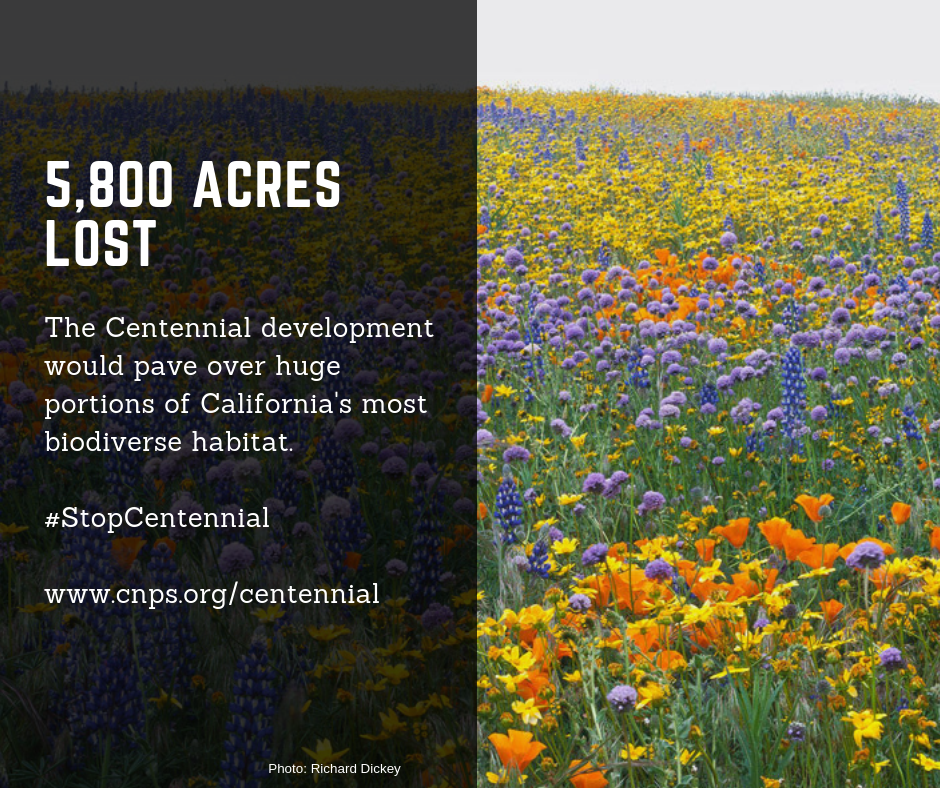
Centennial Development at Tejon Ranch
The LA County Board of Supervisors will consider whether or not to approve the proposed Centennial development next Tuesday, December 11. Although this project is located in LA County, we believe this is an issue that impacts all of California, both in terms of our...
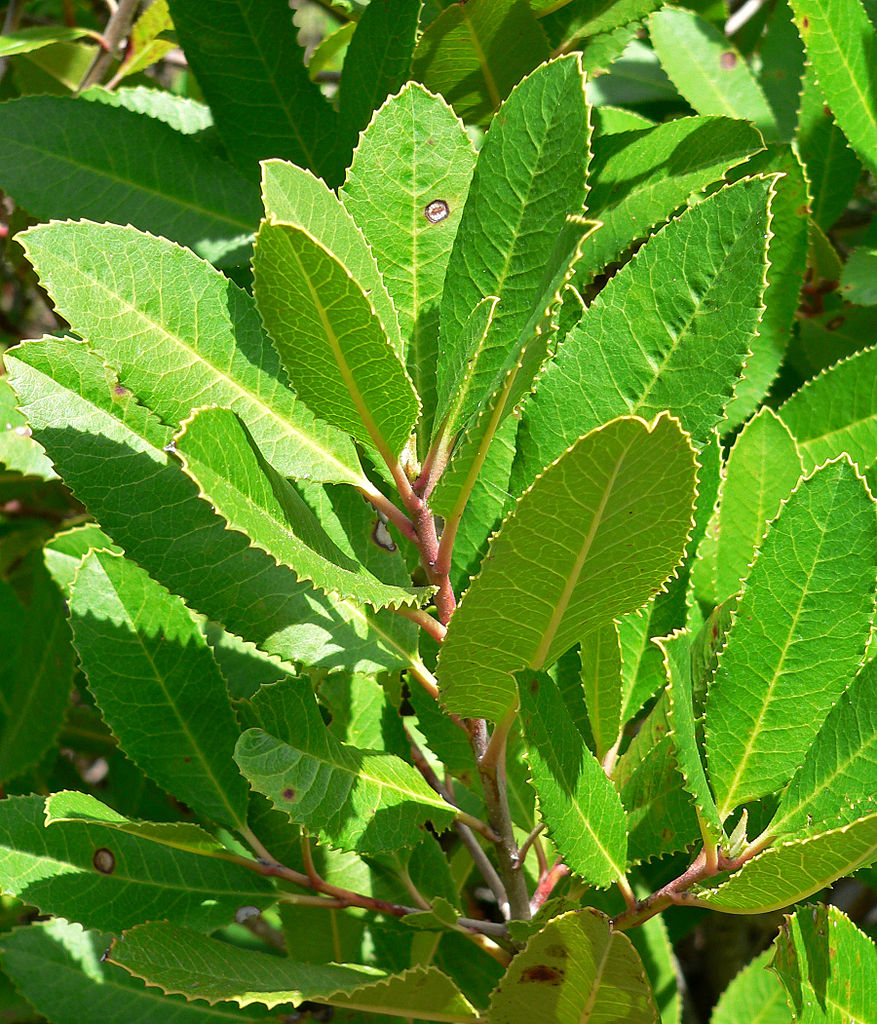
Toyon (Heteromeles arbutifolium)
Toyon, Heteromeles arbutifolium is a wonderful, hardy, native California evergreen shrub. It can be a good screen in the yard, growing up to 6 feet fairly quickly. It tolerates soils from serpentine to clay, to sand. It is not as flammable as other chaparral shrubs. It is a great forage plant for bees, butterflies, and …
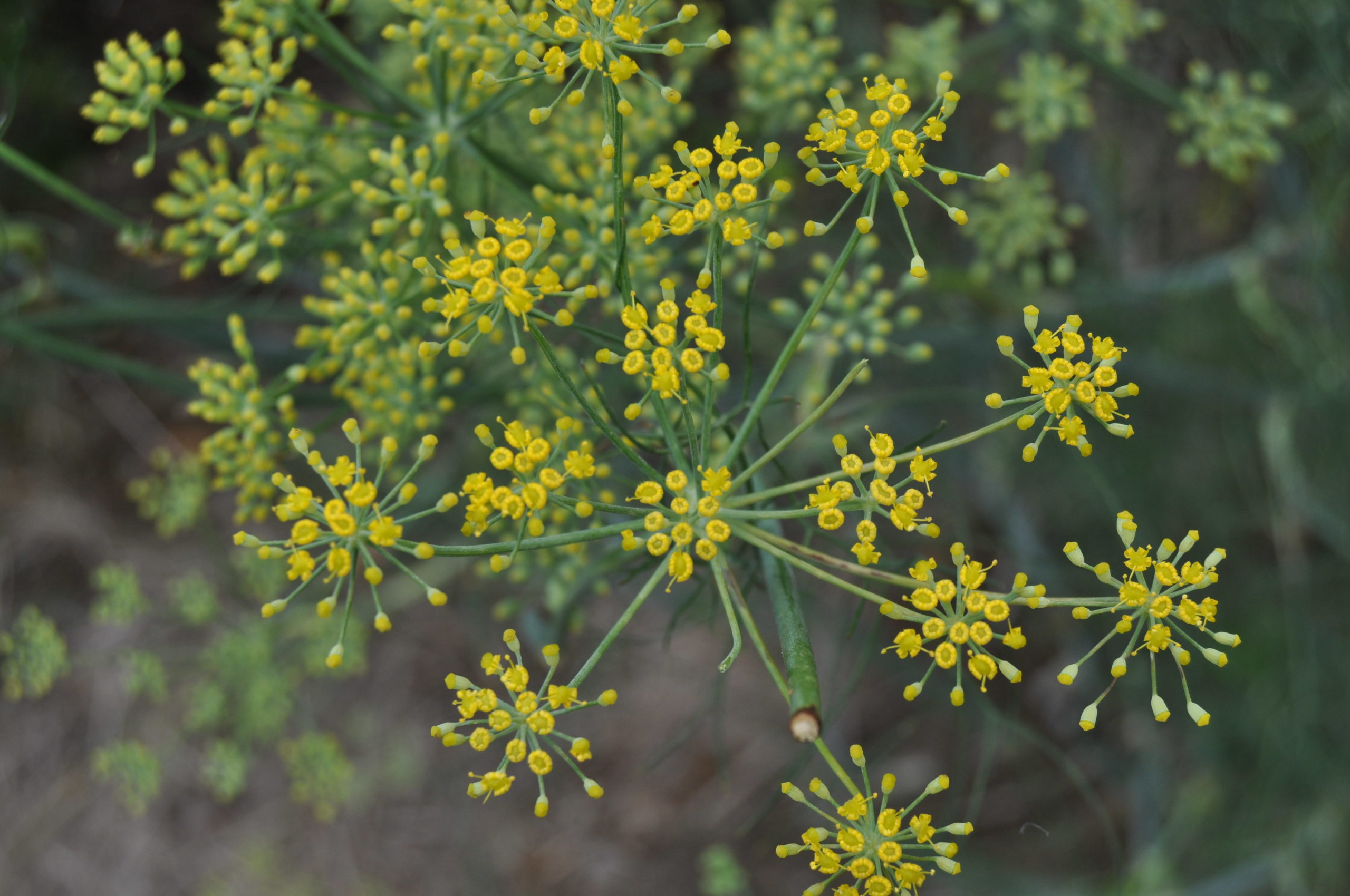
Invasive Species Report – Fennel (Foeniculum vulgare)
The extremely invasive Foeniculum vulgare is in the carrot (Apiaceae) family. It is native to Southern Europe and is problematic in coastal California and is also present throughout the western US all the way to Texas. I’ve encountered Fennel on Santa Catalina Island...
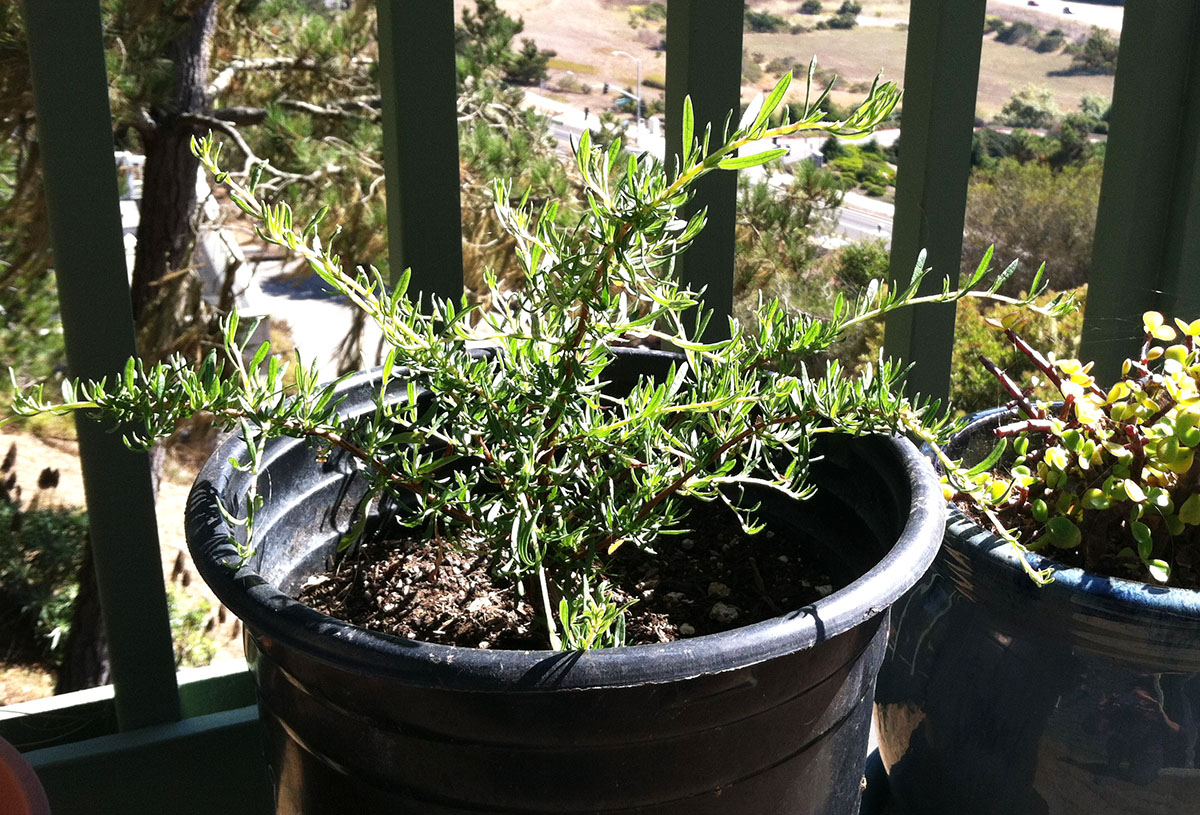
Growing Native Plants from Seeds is Fun
For a native plant novice like me, joining the California Native Plant Society seemed like a good idea so I became a member of the San Luis Obispo chapter. My spouse and I attended our first meeting a year ago last October. That is where I met Marti and the real fun began.
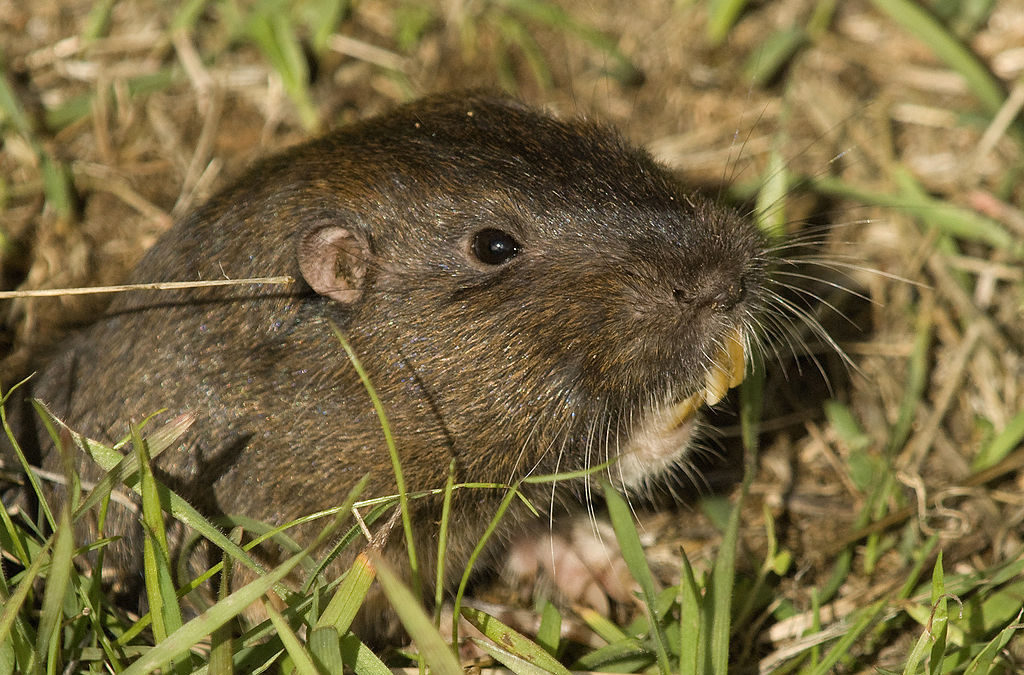
Botta’s pocket gopher
Last month we discussed California ground squirrel problems, this month I will focus on the gopher aka Botta’s pocket gopher (Thomomys bottae). For most of us, gophers can sometimes be a headache but a livable one. They come and go between you and your neighbor’s yard, only losing a couple of plants a year. For yards like these I recommend using …
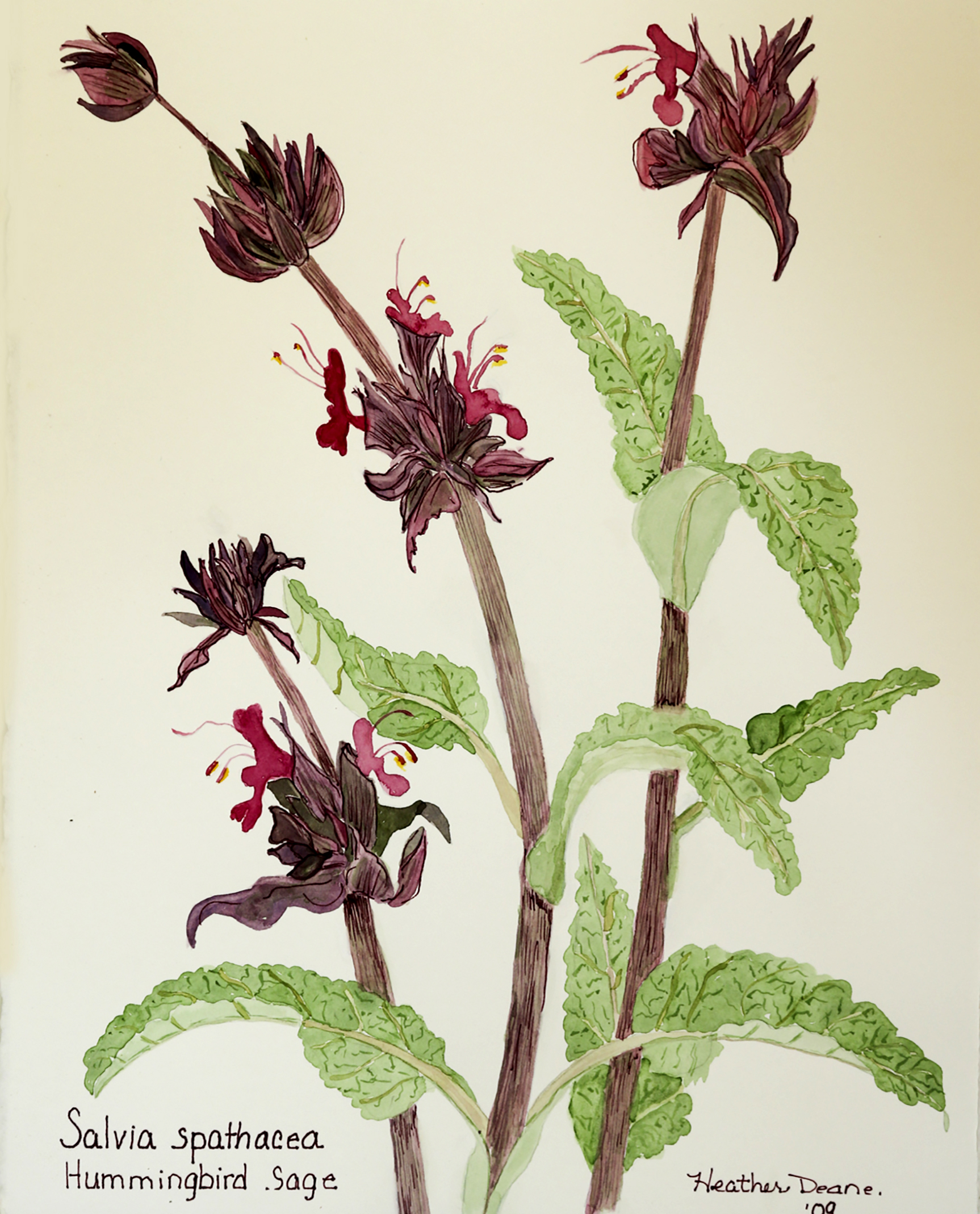
Salvia spathacea (Hummingbird Sage)
The cover of this Obispoensis is another beautiful water color by Heather Johnson. In our area Hummingbird sage can grow in an extensive mat. Its leaves are large (10 in (20 cm) long and 3 in (8 cm) wide). The leaf surface appears quilted. Its family affiliation (Mint or Lamiaceae or Labitae) is shown clearly in Heather’s water color.
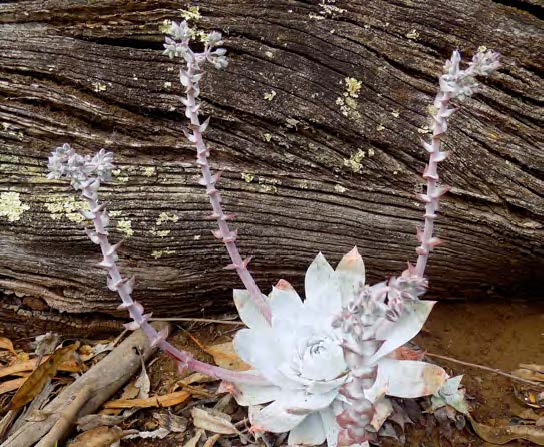
Defeat Dudleya Poaching through Propagation
California Dudleyas are easy to grow. Illegal wild collection can be disrupted via legal propagation. I propagate Dudleya with middle school science classes. If seventh-graders can grow these natives from seed, you can too. Home gardens are a good source of Dudleya...

In Memory of Bill Deneen
Bill Deneen, long time CNPS member, Hoover Awardee, and champion of the Guadalupe-Nipomo Dunes died at the age of 93 in September. Bill taught biology at Santa Maria High School for 25 years, during which time he became a passionate advocate for the environment.
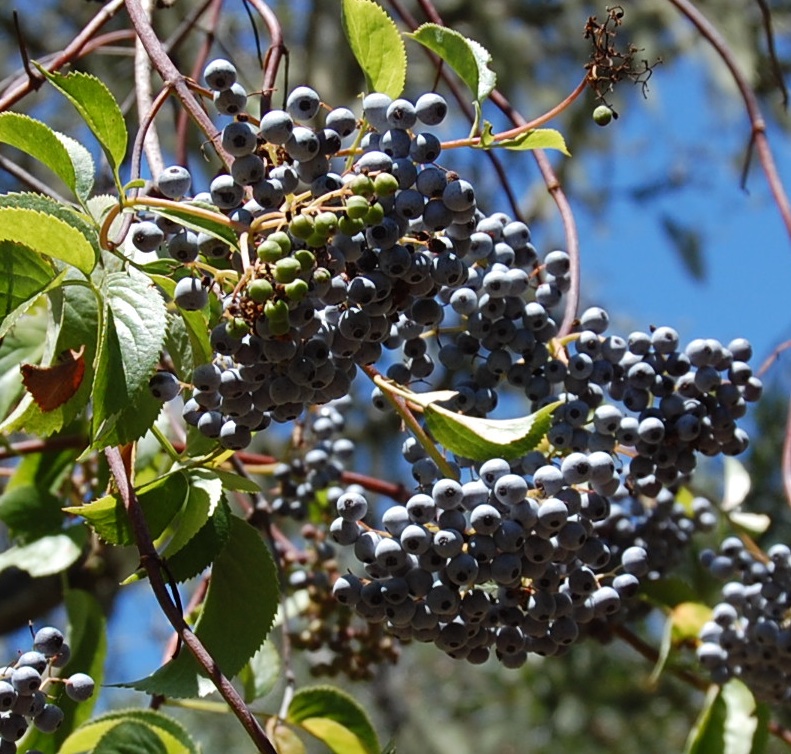
Blue Elderberry (Sambucus coerulea or mexicana)
ETHNOBOTANY NOTES: Blue Elderberry (Sambucus coerulea or mexicana) A delicious, wildlife attracting addition to your garden This last year, I have become the Johnny Appleseed of elderberry plants. Although, I plant the elderberry plants and not the seeds. I have been...
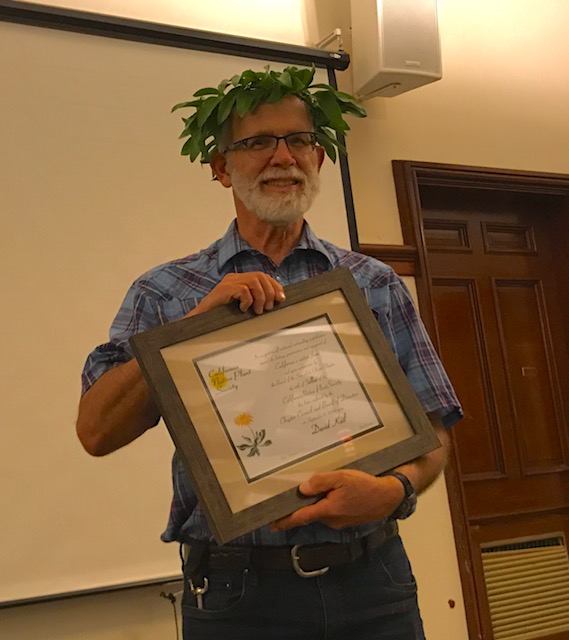
Dr. David Keil honored with a CNPS Fellowship
Dr. Keil joins chapter members Dr. Dirk Walters and Dr. David Chipping as Fellows of CNPS. Past Fellows from the chapter include Dr. Malcolm McLeod and Alice and Bud Meyer
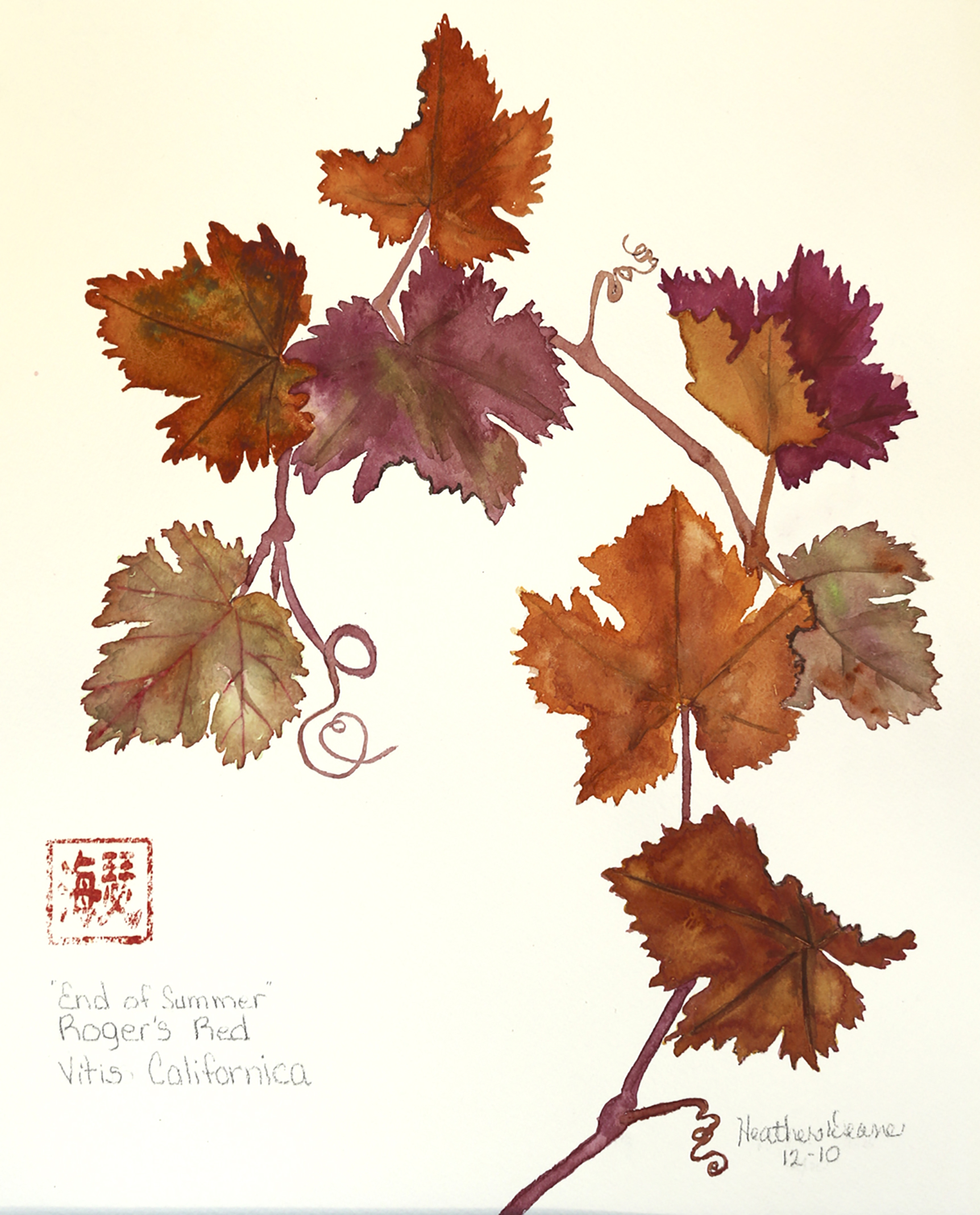
Vitis californica (California grape)
As well as reddish fruits, this variety of wine grape produces bright red leaves in the fall. Enter DNA to the story. Several DNA studies proved that the cultivar ‘Roger’s Red’ is truly a hybrid between the native California grape and the European wine grape Vitis vinifera var. Alicante Bouschet.
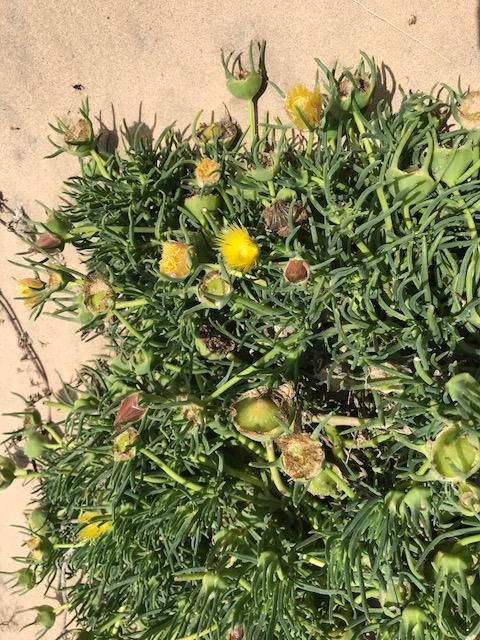
Invasive Species: Narrow leaf iceplant
INVASIVE SPECIES REPORT by Mark Skinner | Conicosia pugioniformis Narrow leaf iceplant. Conicosia is in the Aizoaceae family. It is a succulent perennial with a crowded basal rosette of smooth, bright green, upright, linear leaves. Clustered with the leaves are stems with brilliant yellow flowers.
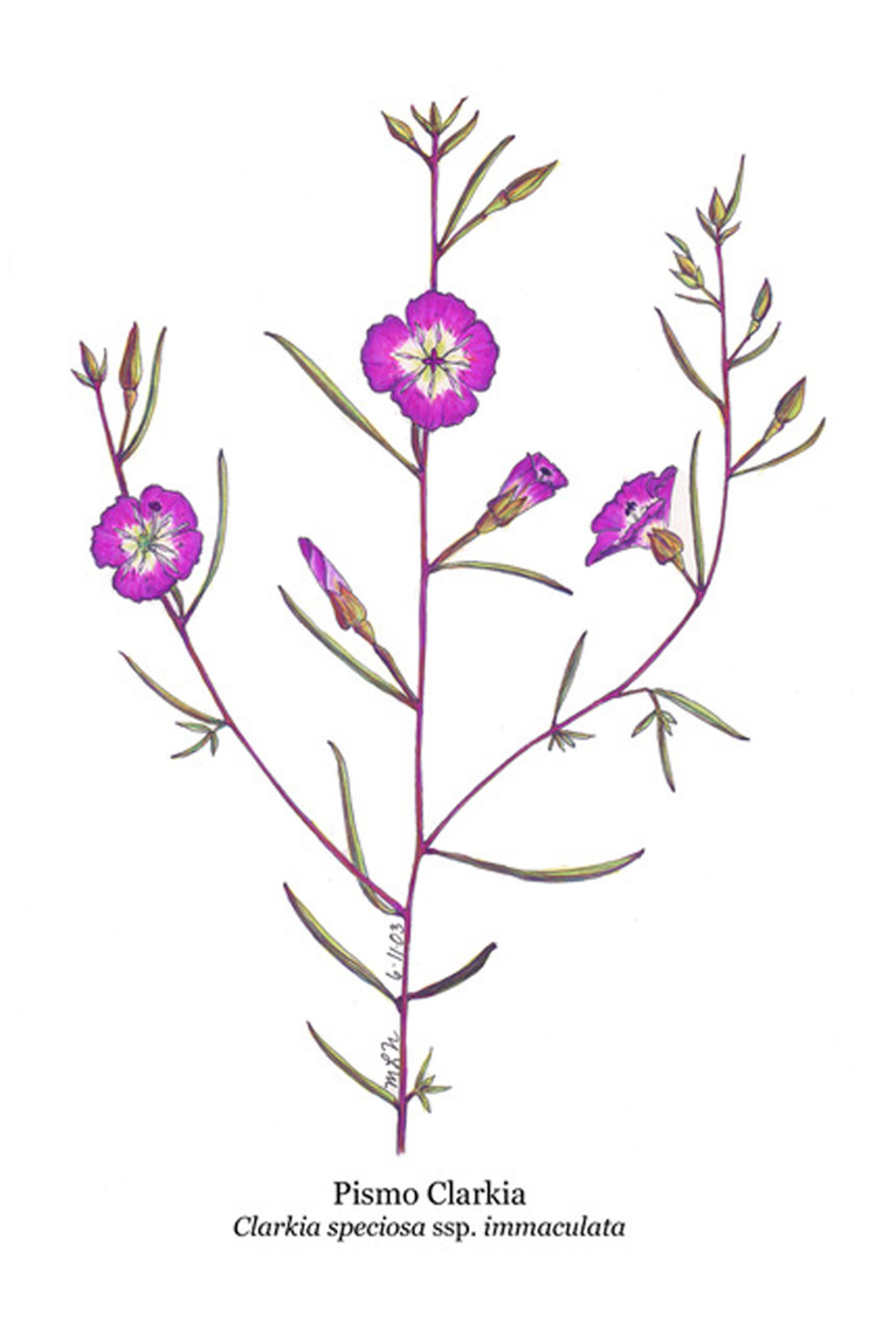
Clarkia speciosa subsp. immaculata (Pismo Clarkia)
I chose the Pismo clarkia because it grows in the area surrounding Mardi’s home and nowhere else. It grows naturally in about 20 occurrences from the southern Edna Valley, south through the foothills and valleys of the Southern San Luis Range, ending east of Pismo Beach and Arroyo Grande (Huasna Valley).
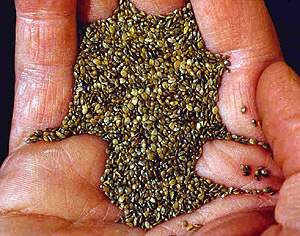
Seed Exchange
I know it seems too early to be thinking seeds. Many of my plants are just starting to bloom. I just wanted to remind those who are interested that the seed exchange is going to take place ate the October meeting before the main program. Let a few of your garden...
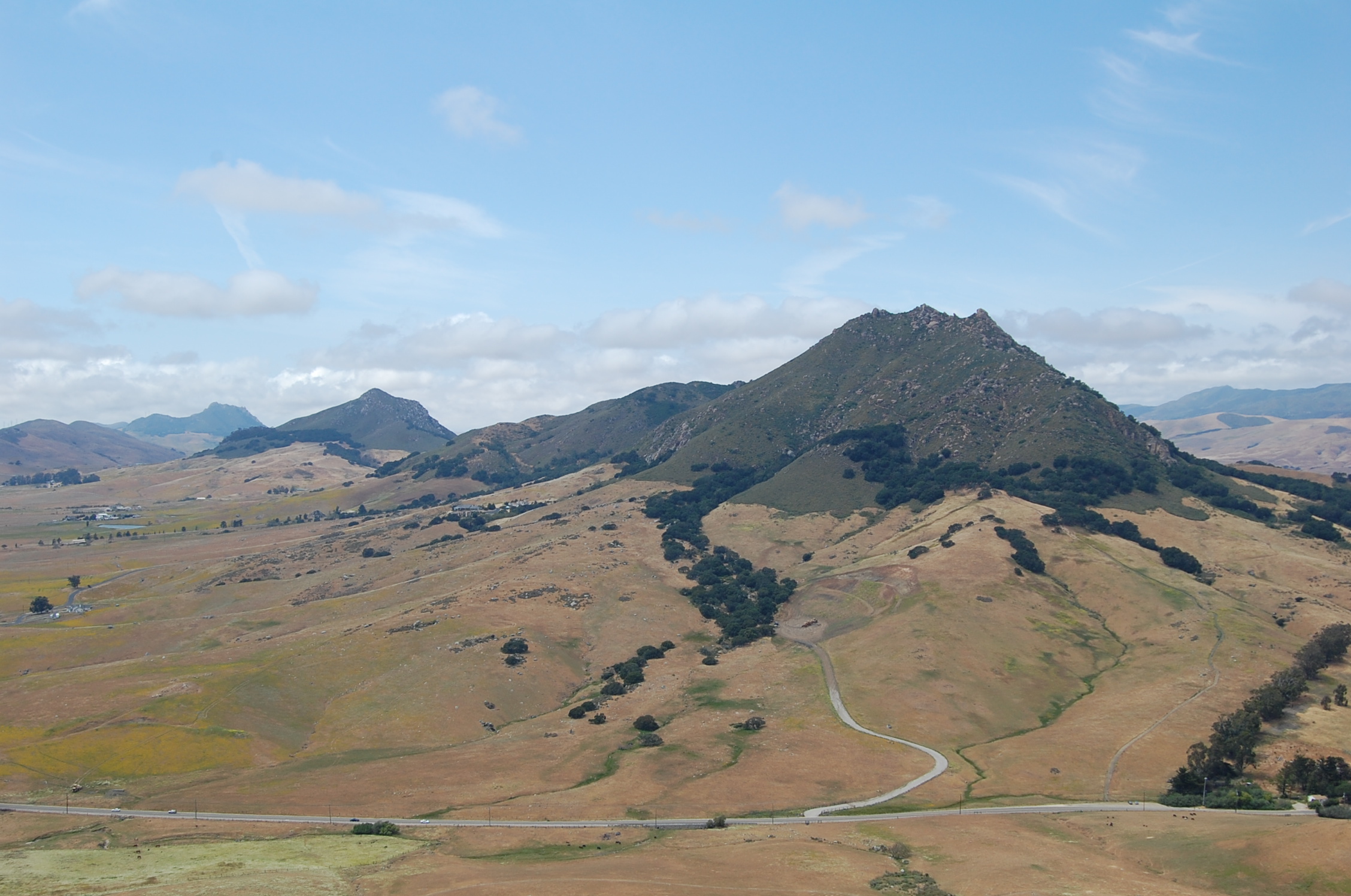
Plant Associations and the Geology of the Morros
What you are seeing is a display of the underlying geology manifested in the soils that lie above the bedrock. The browning grasslands are floored with ‘melange’ of the Franciscan Formation, a unit composed of sheared shale and bits and pieces of the ancient seafloor that were squished into a subduction zone… kinda like what happens if you try and push a slice of pizza under a door.
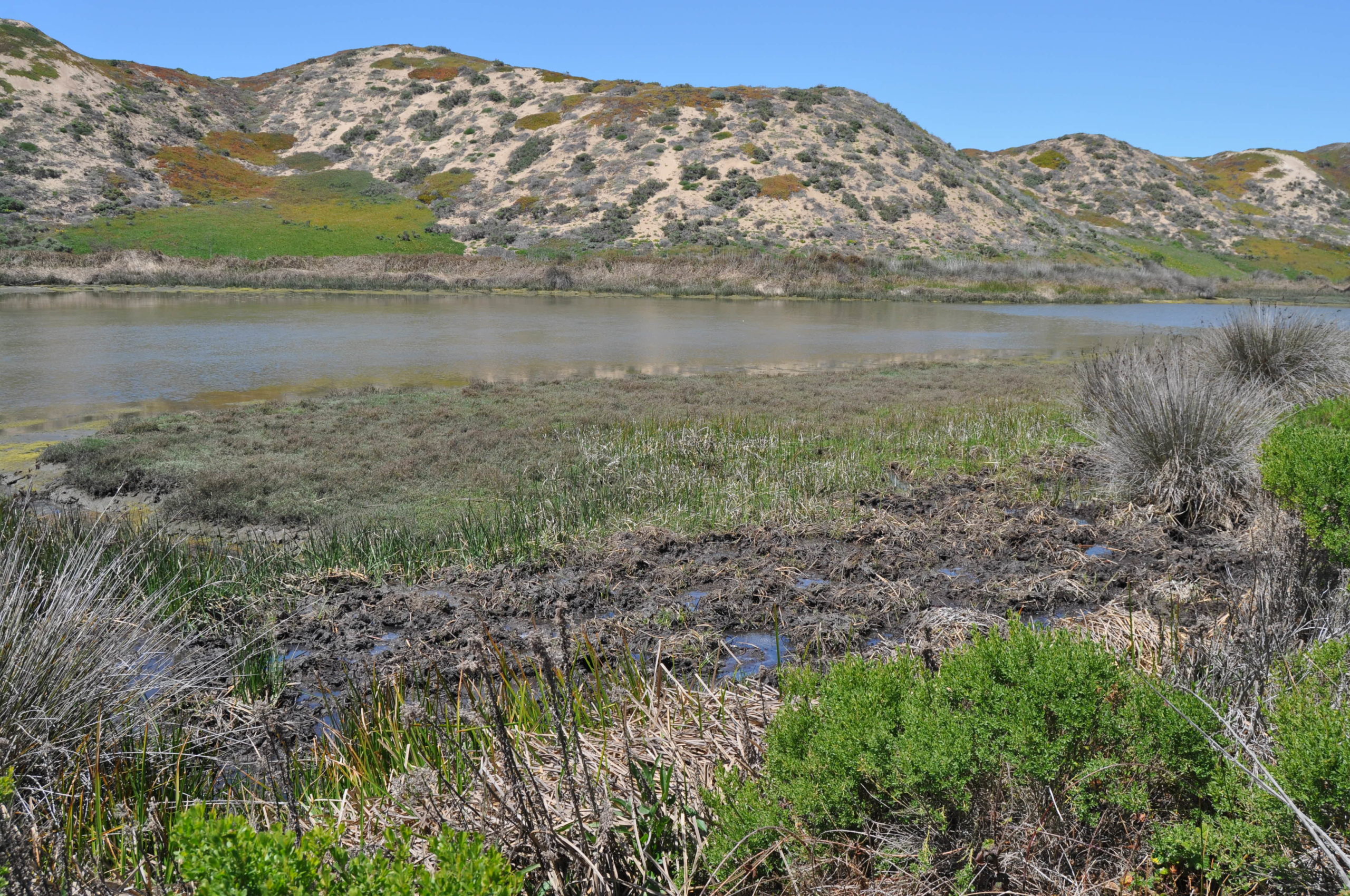
Pigs Attack the Saltmarsh of Morro Bay… again
Wild pigs are again active in Morro Bay, causing damage while rooting for the tuberous reeds in the brackish freshwater seep zones close to the high tide line. This time they are at Shark Inlet. We last saw them in 2015 on both sides of the South Bay Boulevard bridge, and neither of the locations appear to have recovered.
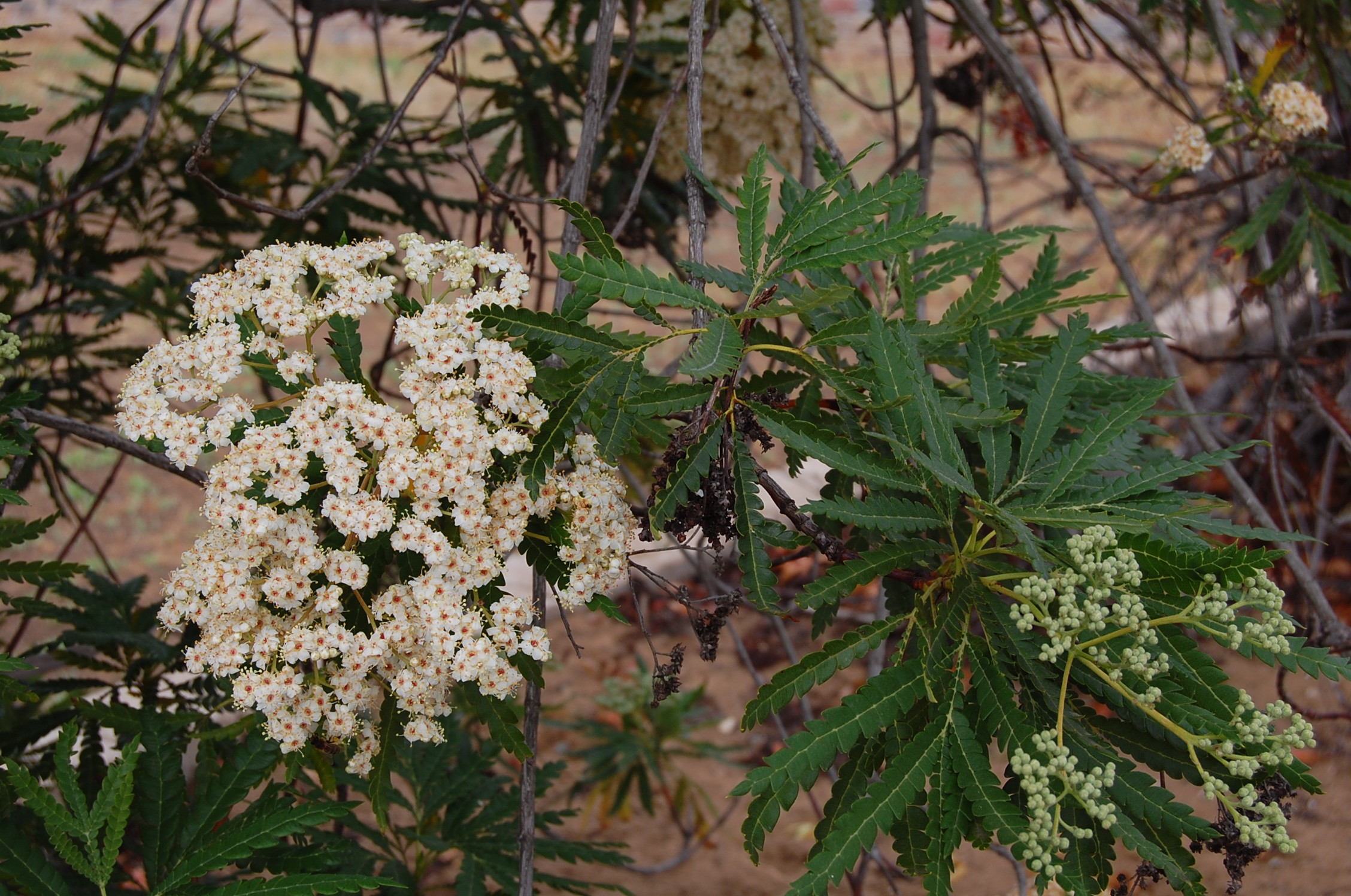
Horticulture Blog
Lyonothamnus floribundus ssp. aspleniifolius is a mouthful to say but there is nothing edible about this tree. Lyonothamnus is endemic to the Channel Islands of California, where it grows in the chaparral and oak woodlands of the rocky coastal canyons
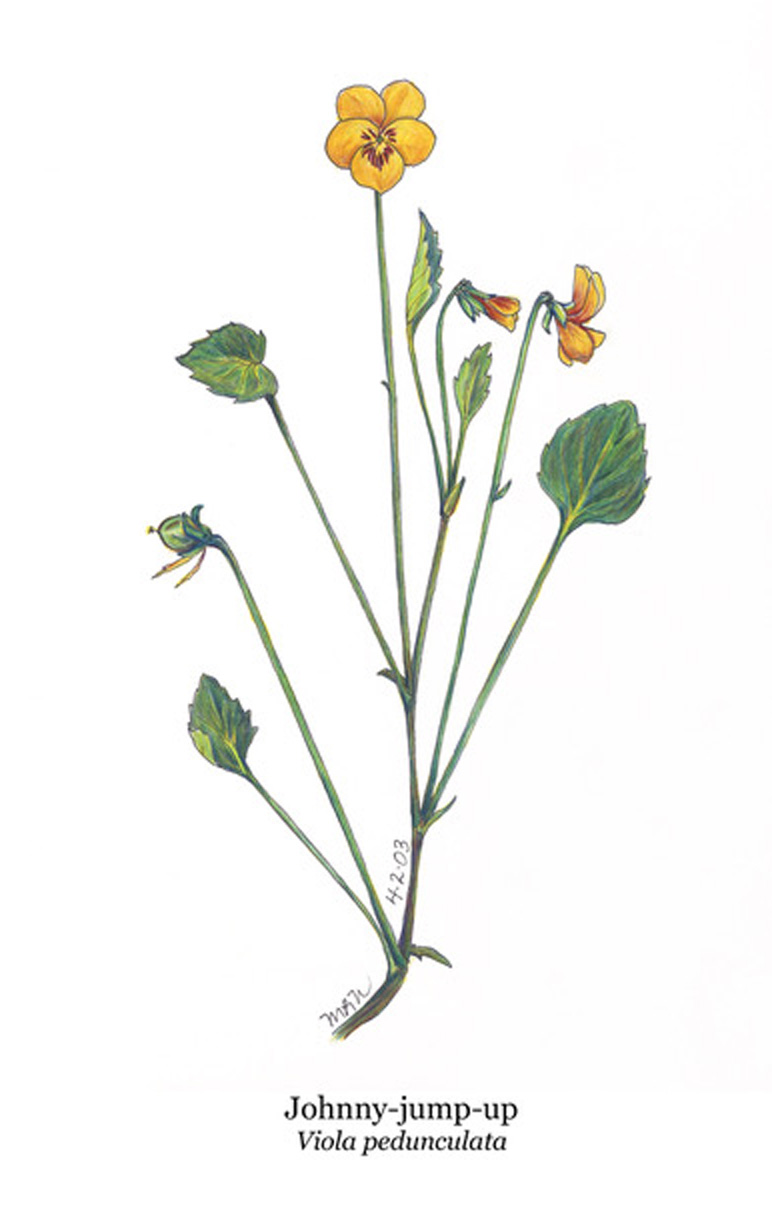
Viola pedunculata (Johnny-jump-up)
Wild (California, yellow, or grass) violet, pansy or Johnny –jump-up This botanical illustration was created by Mardi Niles using a Micron 005 #1 Archival Ink pen and Prismacolor Verithin colored pencils on Bristol Regular paper. It will be the first of several...
